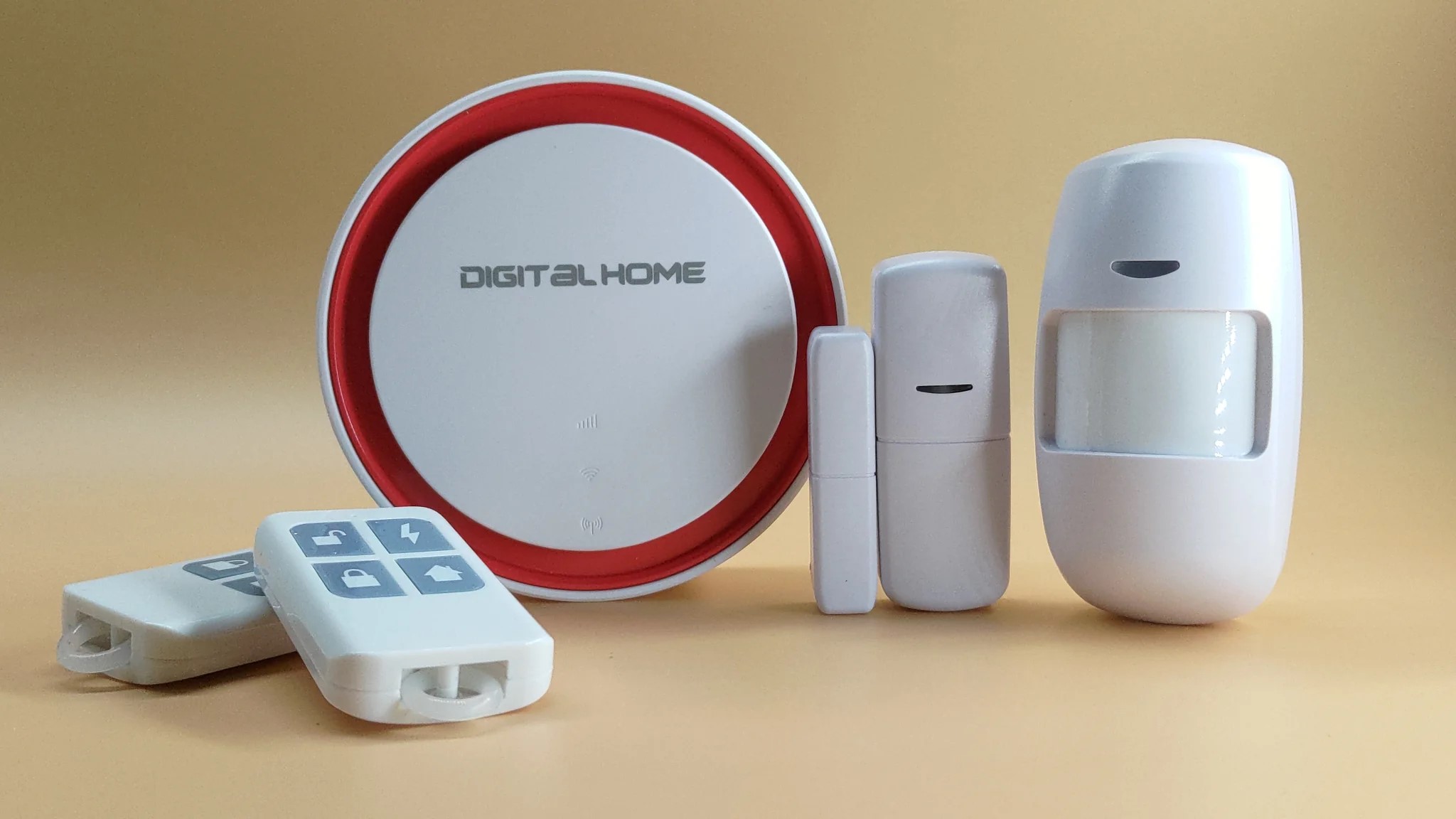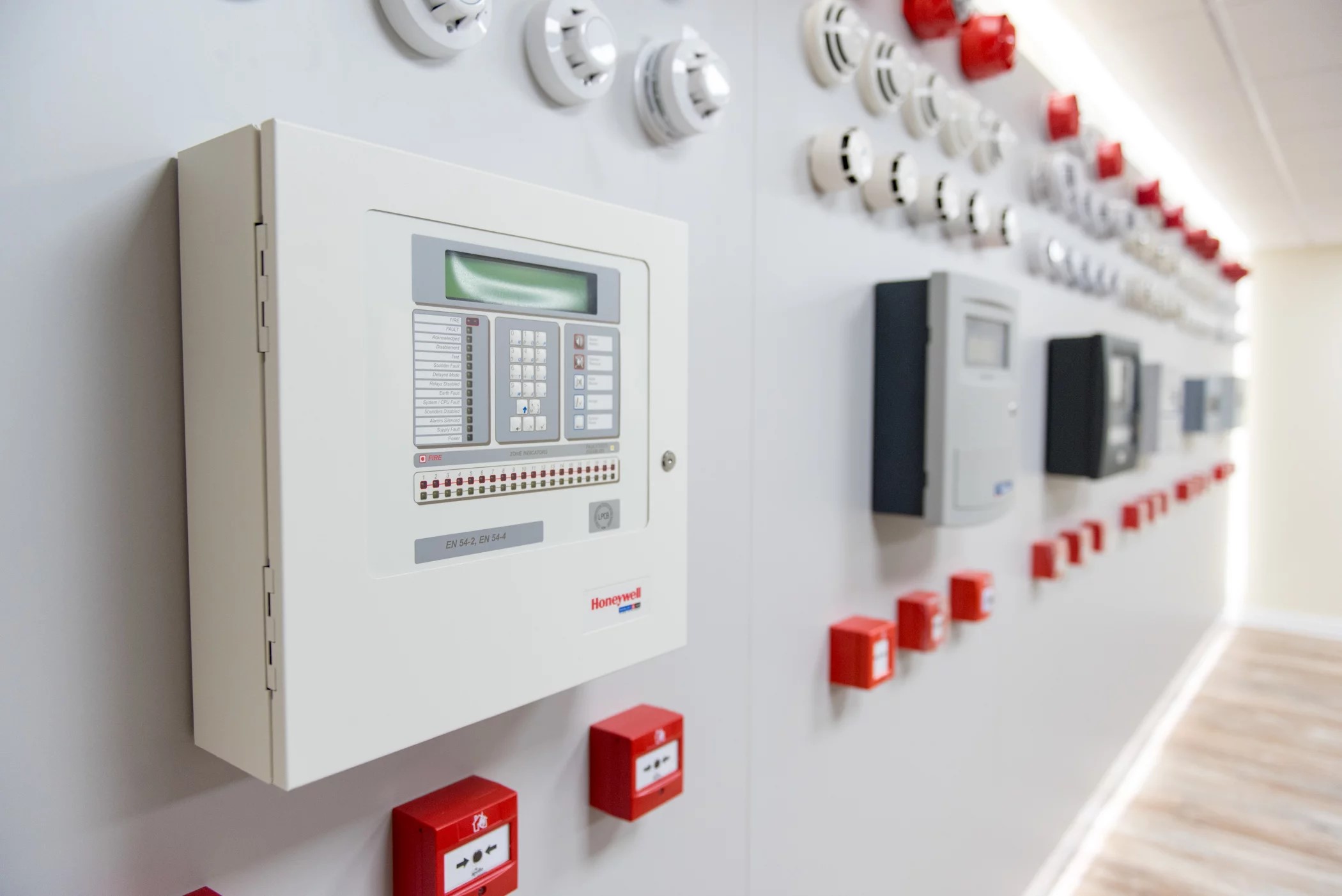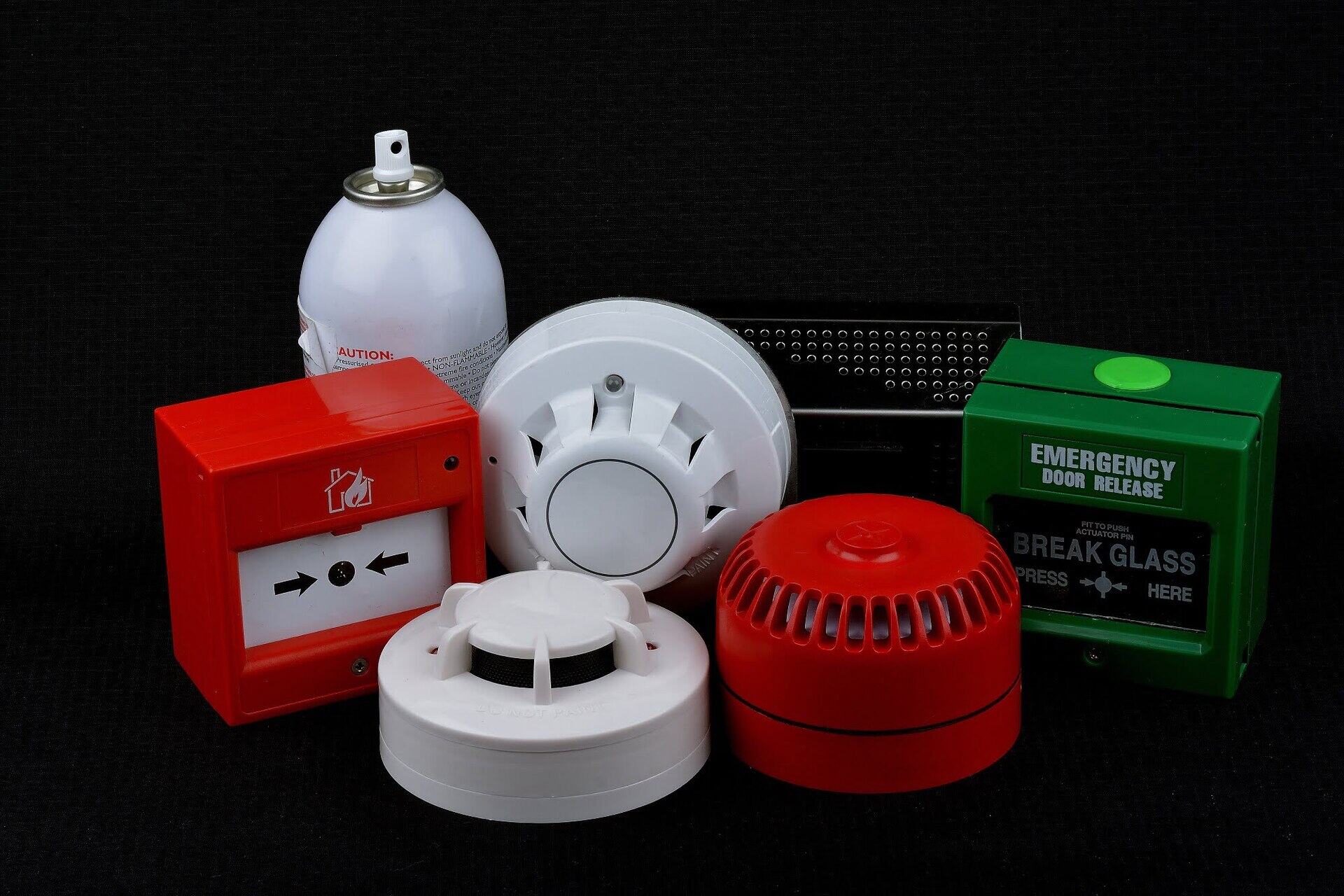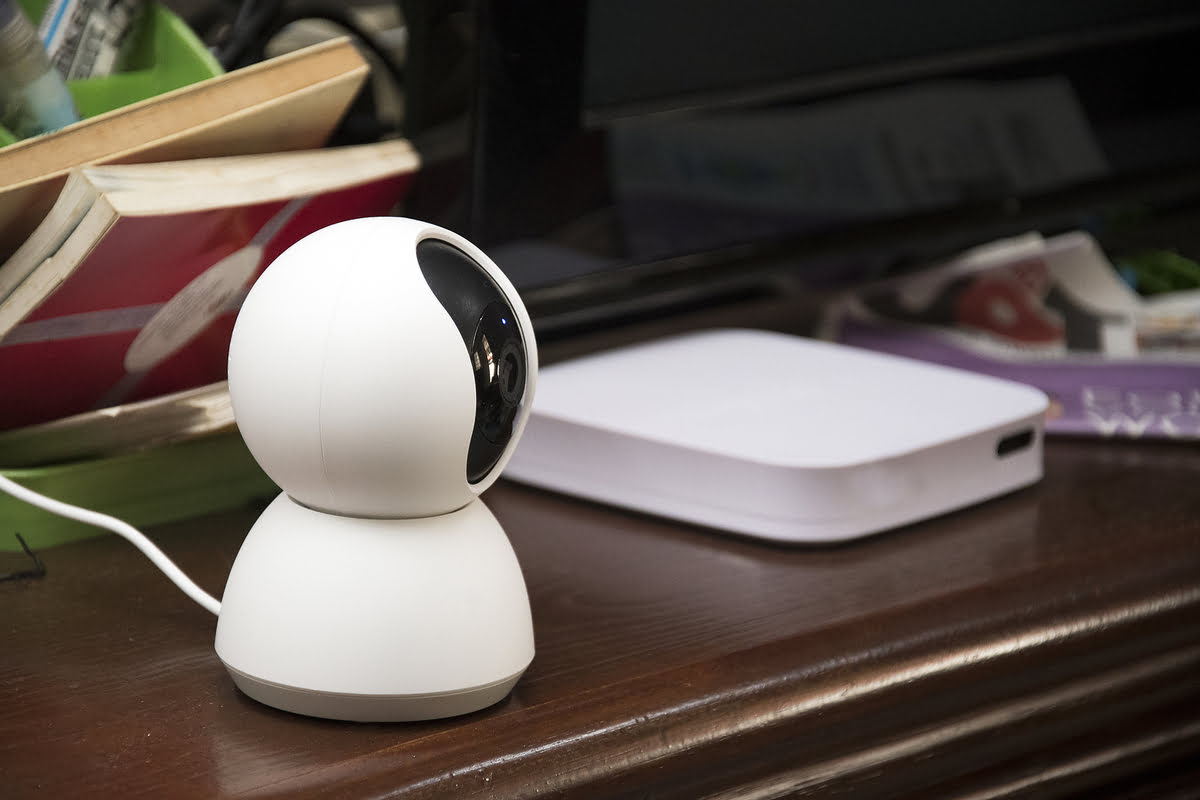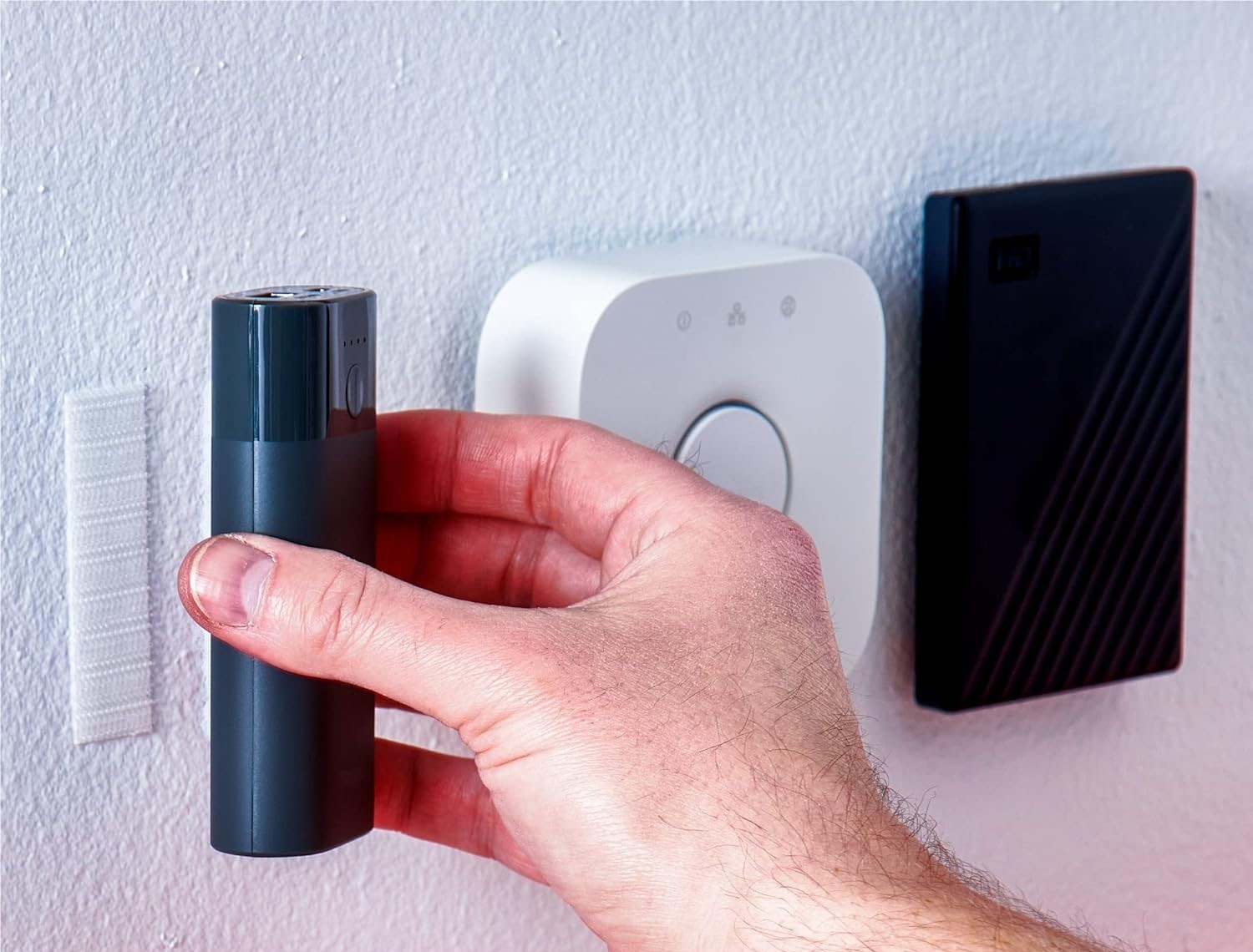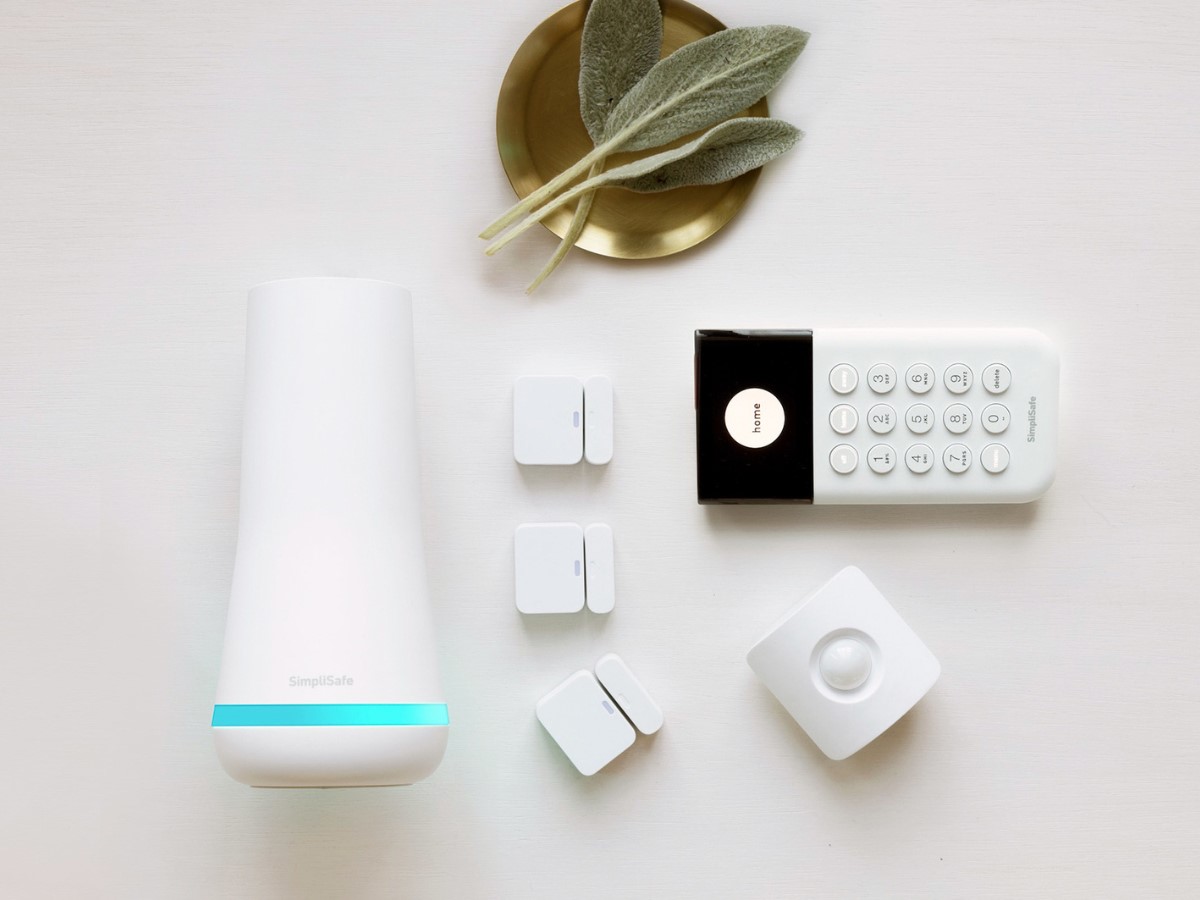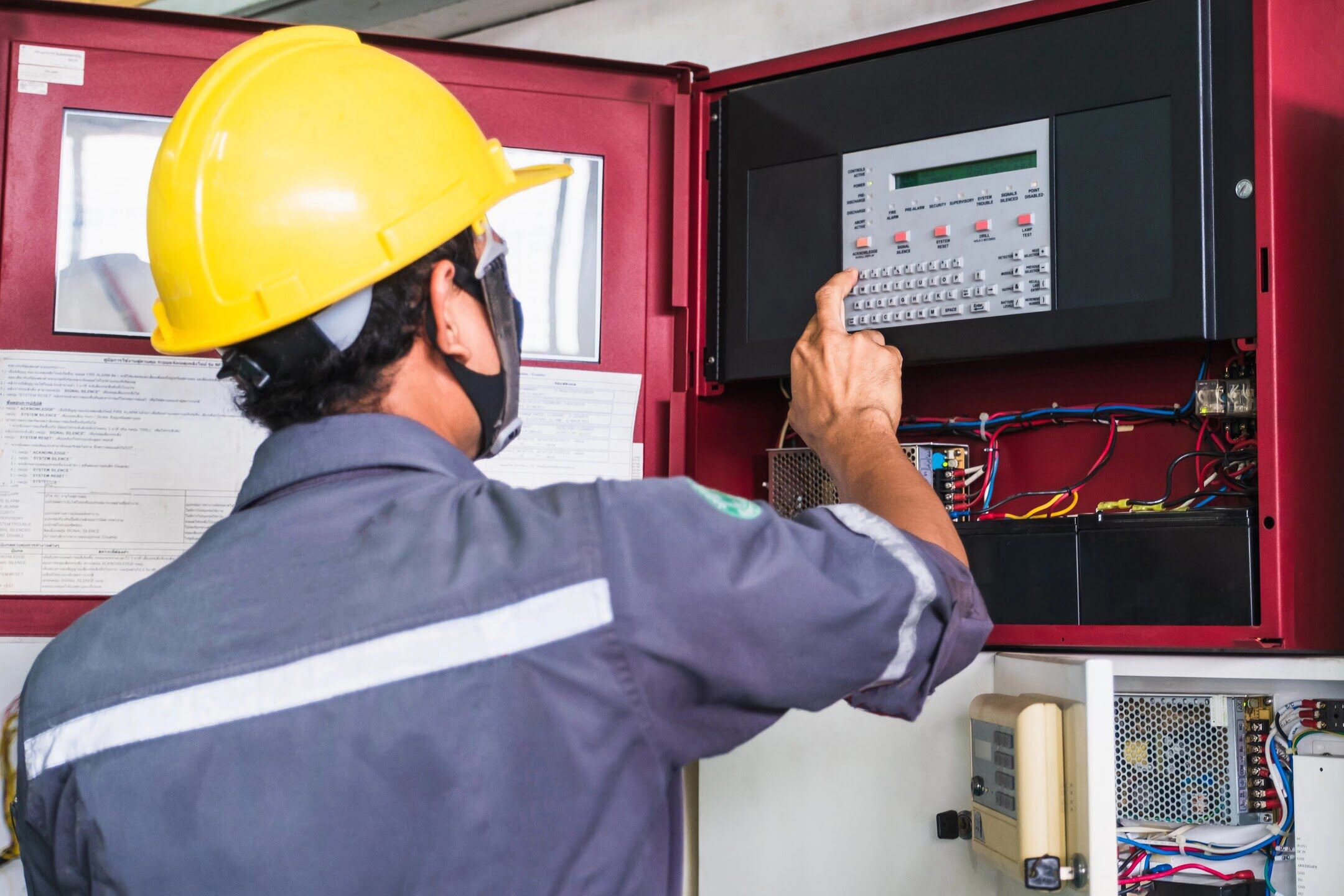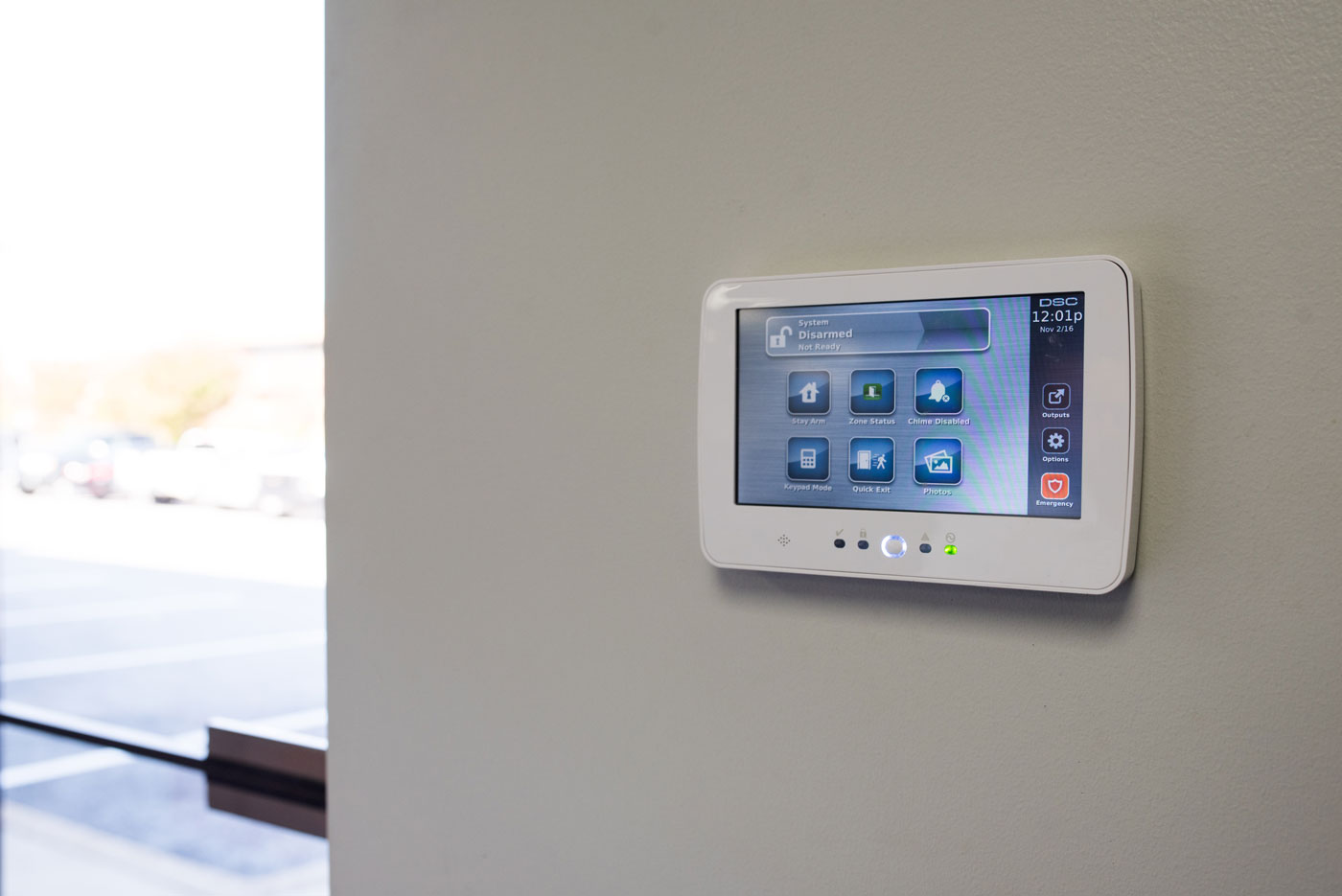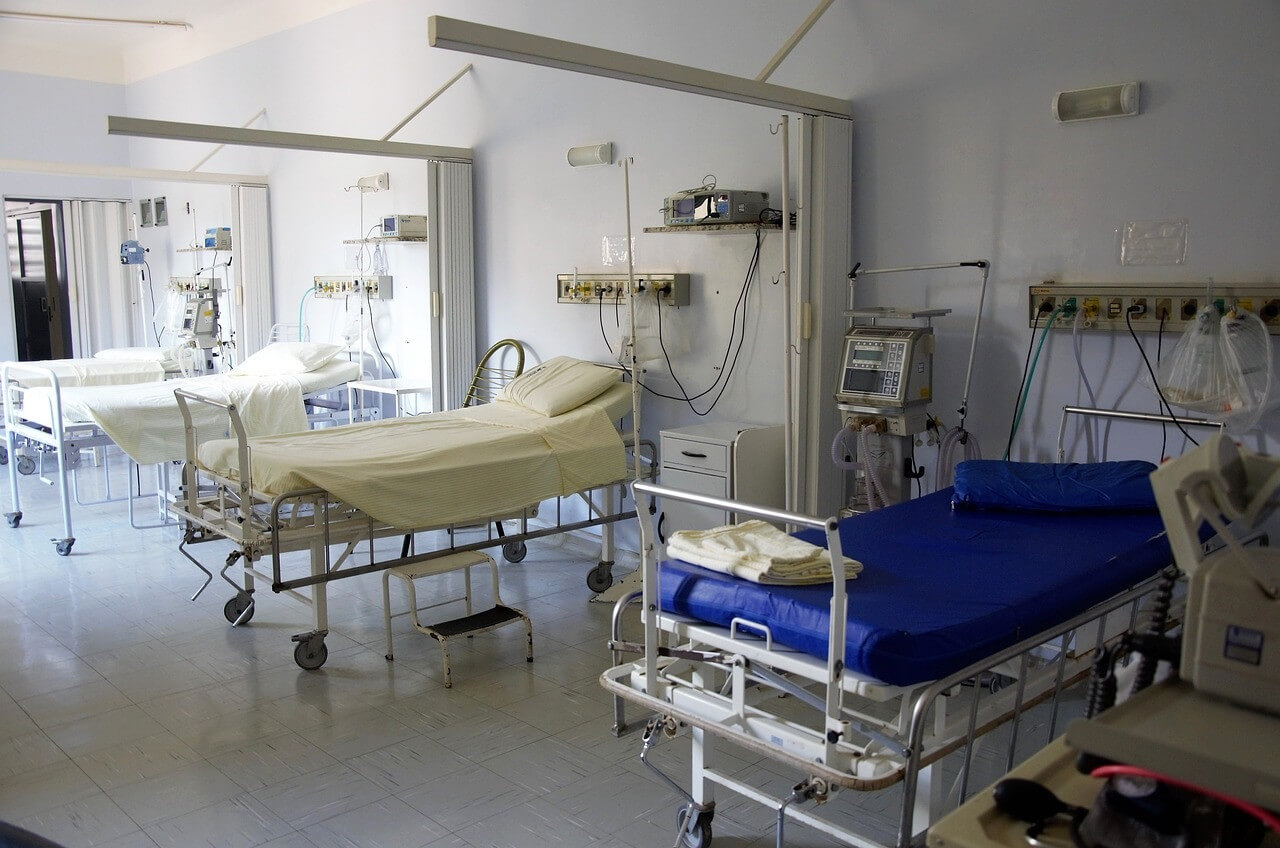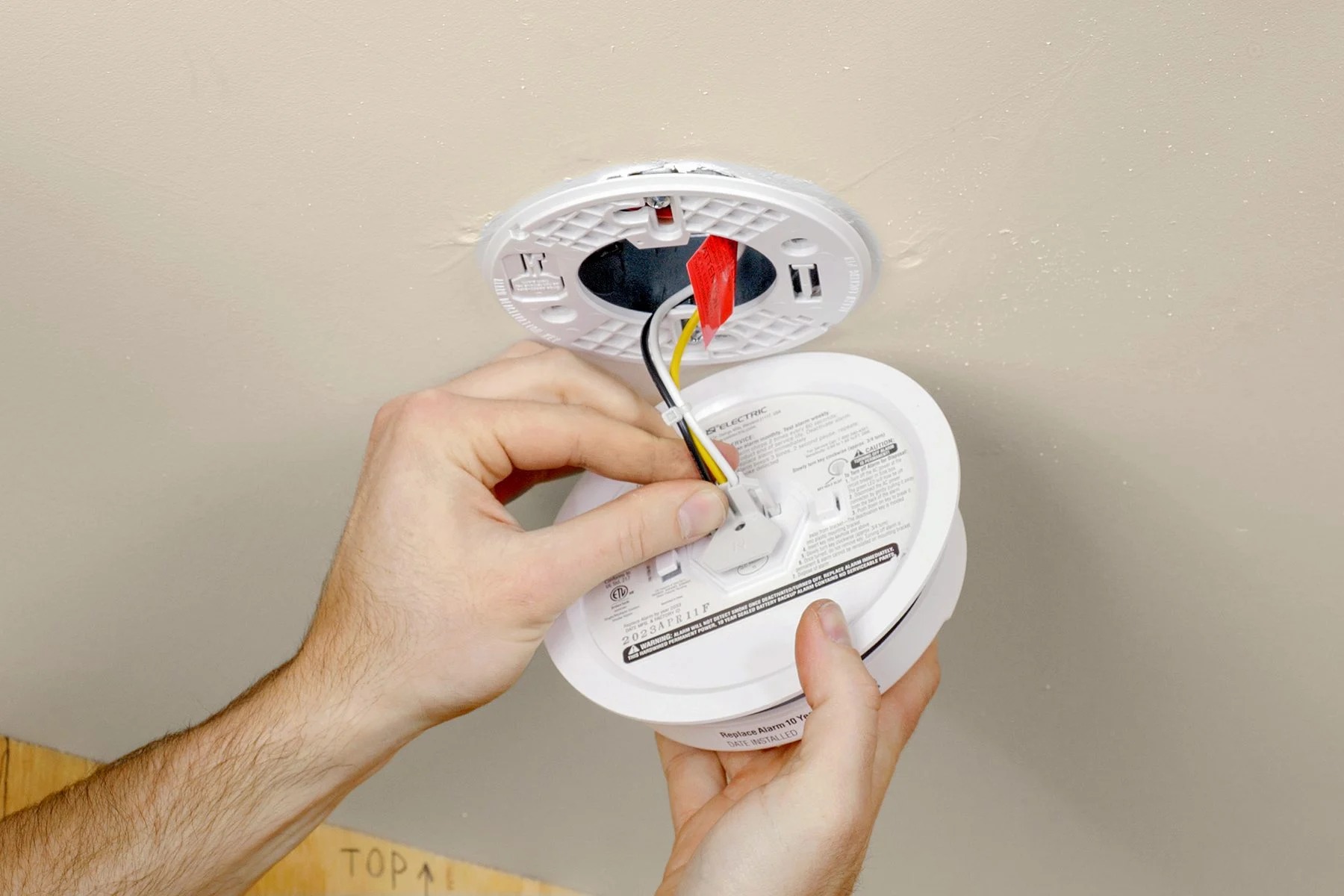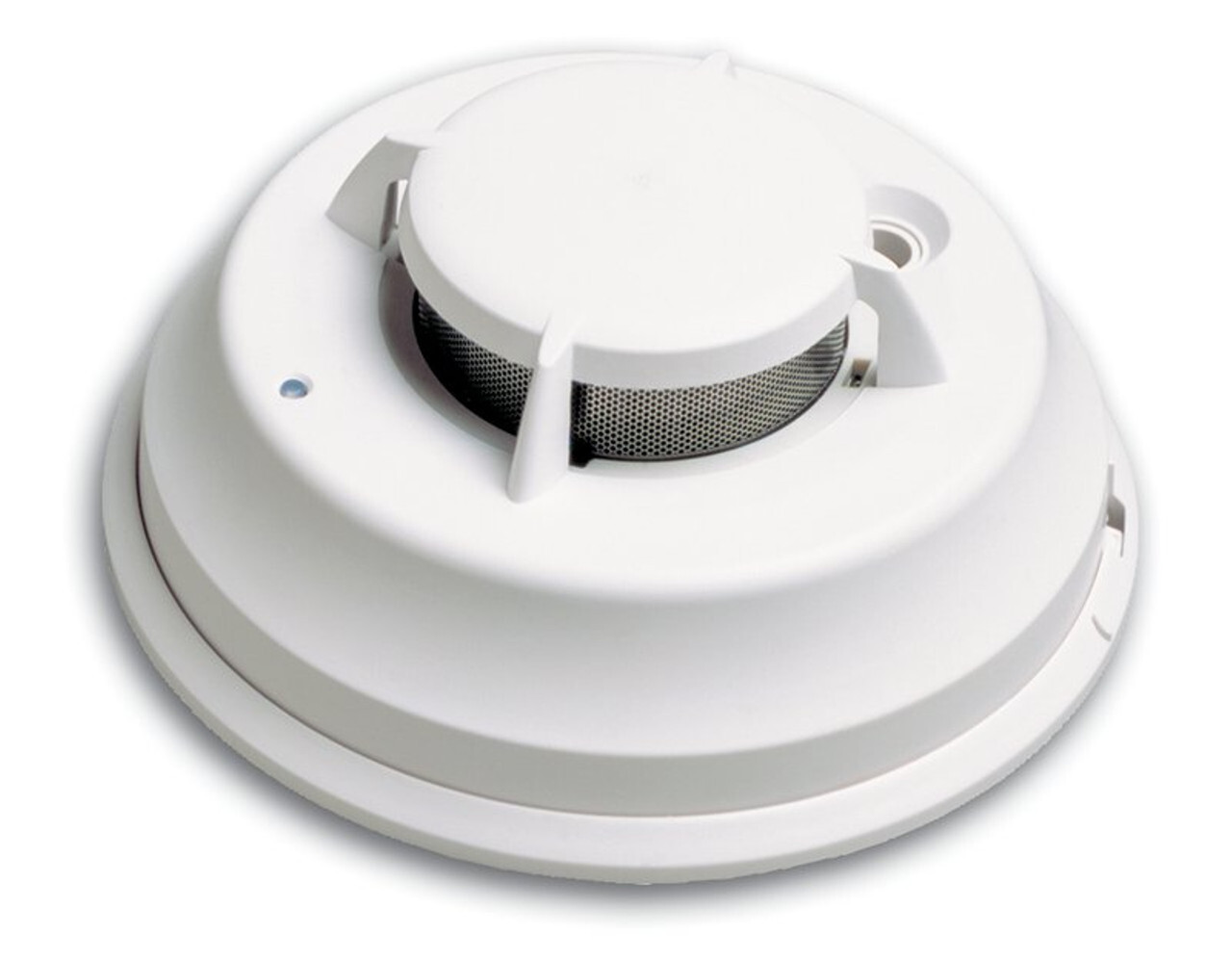Home>Home Security and Surveillance>What Measures Should Be Taken To Improve The Safety Of Clinical Alarm Systems In Hospitals
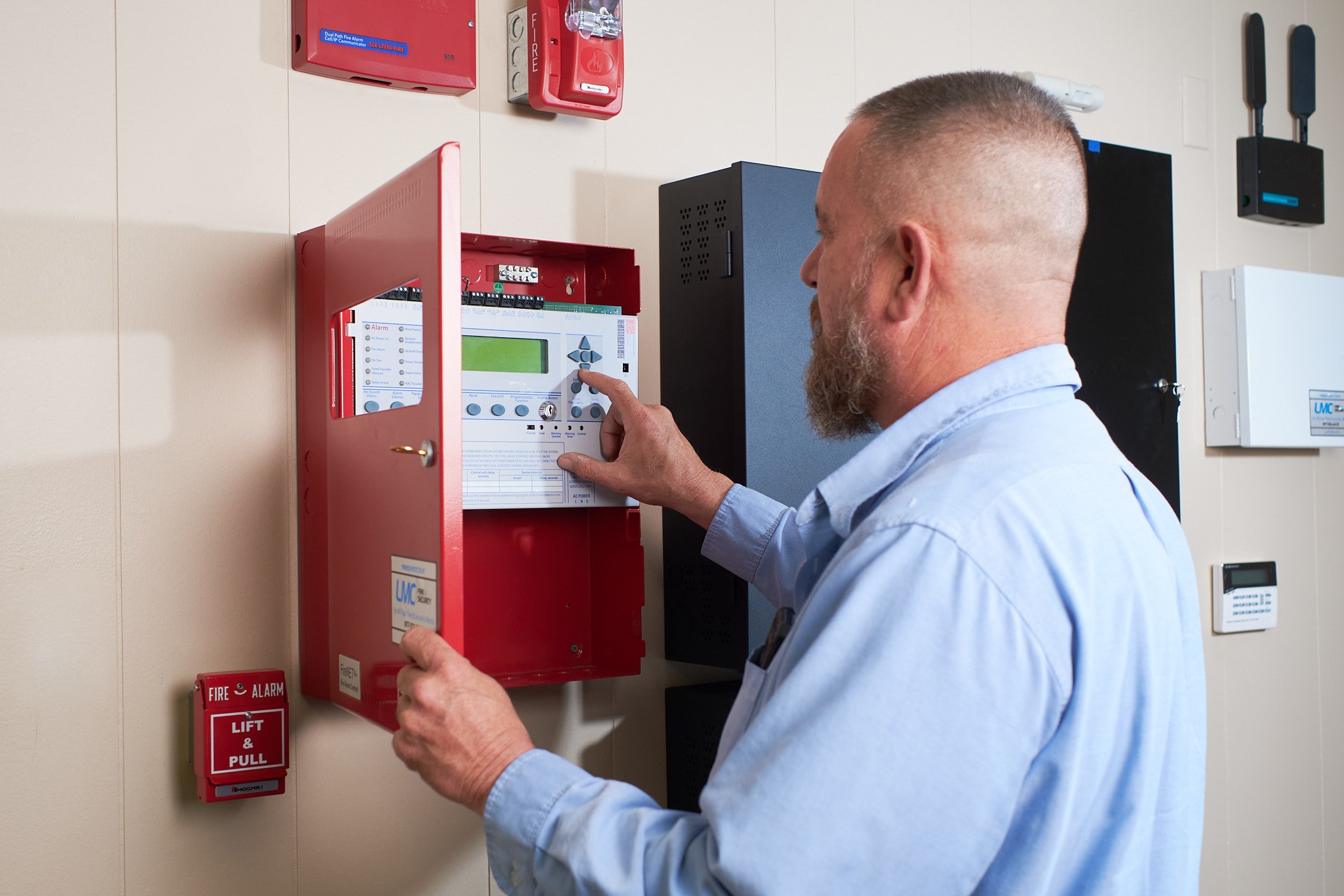

Home Security and Surveillance
What Measures Should Be Taken To Improve The Safety Of Clinical Alarm Systems In Hospitals
Modified: March 6, 2024
Discover effective measures to enhance the safety of clinical alarm systems in hospitals. Improve home security and surveillance to ensure a safe environment.
(Many of the links in this article redirect to a specific reviewed product. Your purchase of these products through affiliate links helps to generate commission for Storables.com, at no extra cost. Learn more)
Introduction
Welcome to the ever-evolving world of home security and surveillance, where technological advancements have made it easier than ever to protect your home and loved ones. In today’s fast-paced society, having a robust home security and surveillance system is essential for peace of mind and is the first line of defense against potential threats.
With the rise in criminal activities and the increasing need to safeguard our homes, it’s crucial to stay on top of the latest home security and surveillance trends, advancements, and best practices. Implementing a comprehensive security system not only deters potential intruders but also provides you with round-the-clock remote monitoring capabilities, ensuring that your home remains safe even when you’re away.
In this comprehensive guide, we will delve into the intricacies of home security and surveillance, exploring various aspects of security system design, installation, and optimization. We will cover topics ranging from choosing the right surveillance cameras to understanding the importance of cybersecurity in protecting your surveillance system.
Furthermore, we will discuss different types of security systems available in the market, highlighting their pros and cons, and guiding you on selecting the system that best suits your unique needs. Whether you’re a homeowner, a property manager, or a business owner, this guide aims to provide you with the knowledge and tools necessary to create a secure and well-protected environment.
In addition to the technical aspects of home security and surveillance, we will also touch upon the psychological and emotional impact of feeling safe at home. Studies have shown that a secure living environment contributes to overall well-being and enhances productivity. By implementing an effective security system, you can create a haven where you and your loved ones can thrive without worrying about potential threats.
Throughout this guide, we will emphasize the importance of SEO optimization to ensure that your content is not only valuable but also easily discoverable in search engines. By incorporating relevant keywords, implementing proper heading tags, and following other SEO best practices, you can enhance the visibility of your content and attract a wider audience.
So, let’s dive into the world of home security and surveillance and equip ourselves with the knowledge and tools needed to protect what matters most. Together, we can create a safer and more secure environment for ourselves and our communities.
Key Takeaways:
- Standardizing alarm settings and integrating advanced technologies can improve patient safety by reducing unnecessary alarms and enhancing healthcare providers’ ability to respond to critical situations effectively.
- Education, collaboration, and proactive maintenance are essential for optimizing clinical alarm systems, ensuring timely responses, and minimizing the risk of alarm fatigue in healthcare settings.
Importance of Safety in Clinical Alarm Systems
Safety in clinical alarm systems is of paramount importance in healthcare settings. These systems play a crucial role in alerting healthcare providers to potential patient emergencies, ensuring timely intervention and preventing adverse outcomes. However, the alarming rate of alarm-related incidents and the occurrence of alarm fatigue have raised concerns about the safety and effectiveness of these systems.
The primary purpose of clinical alarm systems is to draw attention to critical changes in a patient’s condition or equipment malfunction. These alarms can be triggered by vital sign monitors, infusion pumps, ventilators, and other medical devices. Timely recognition and appropriate response to these alarms are vital for patient safety and care quality.
When clinical alarm systems are well-designed and properly implemented, they enhance patient safety by alerting healthcare providers to changes in a patient’s condition that require immediate attention. These systems act as a safety net, allowing healthcare providers to respond promptly, prevent adverse events, and improve patient outcomes.
Furthermore, clinical alarm systems contribute to workflow efficiency in healthcare settings. By promptly alerting healthcare providers to critical events, these systems streamline communication and facilitate coordinated responses. This improves teamwork, reduces delays in care, and maximizes the efficient use of staff resources.
However, numerous challenges exist in ensuring the safety of clinical alarm systems. One significant challenge is the high number of false alarms, which can lead to desensitization and alarm fatigue among healthcare providers. Alarm fatigue occurs when healthcare providers become desensitized to the constant barrage of alarms, resulting in delayed or inappropriate responses to critical situations.
Alarm fatigue is a recognized patient safety risk, as it can lead to missed alarms and delayed intervention, potentially compromising patient outcomes. To address this issue, it is essential to optimize alarm settings, establish protocols for alarm management, and implement strategies to reduce alarm fatigue.
Another safety concern with clinical alarm systems is the lack of standardization. Different manufacturers and models of medical devices may have varying alarm settings, making it challenging for healthcare providers to learn and respond consistently to alarms. The absence of standardization can lead to confusion and potentially compromise patient safety.
To address these challenges and ensure the safety of clinical alarm systems, healthcare organizations need to implement a multidisciplinary approach. This includes the active involvement of healthcare providers, biomedical engineers, information technology specialists, and patient safety experts.
In the next sections, we will explore the factors contributing to safety risks in clinical alarm systems and discuss measures that can be taken to improve their safety. By integrating these safety measures into clinical practice, healthcare organizations can enhance patient safety and optimize the effectiveness of alarm systems.
Current Challenges in Clinical Alarm Systems
Clinical alarm systems are an integral part of patient care in healthcare facilities. However, they also pose several challenges that can impact patient safety and healthcare provider efficiency. Let’s explore some of the current challenges in clinical alarm systems:
- Alarm Fatigue: One of the most significant challenges is alarm fatigue. Healthcare providers are bombarded with a high volume of alarms, many of which are false or non-actionable. This constant noise and distraction can lead to desensitization, where healthcare providers become desensitized to alarms and may not respond appropriately to critical situations. Addressing alarm fatigue is crucial to ensure that relevant alarms are promptly acted upon and patient safety is not compromised.
- False Alarms: False alarms are alarms that do not require immediate action or are triggered in non-critical situations. This leads to unnecessary interruptions and can contribute to alarm fatigue. False alarms can occur due to technical issues, improper alarm settings, or inadequate patient monitoring. Reducing false alarms is necessary to prevent alarm fatigue and improve the effectiveness of the alarm system.
- Lack of Standardization: Clinical alarm systems often lack standardization in terms of alarm sounds, colors, and settings. Different devices from various manufacturers may have different alarm parameters and may not be compatible with each other. This lack of standardization can cause confusion and delay in appropriate response. Standardizing alarm settings and promoting interoperability among devices can enhance the usability and effectiveness of clinical alarm systems.
- Poor Alarm Management: Inadequate alarm management practices contribute to the challenges faced in clinical alarm systems. This includes issues such as improper adjustment of alarm parameters, insufficient staff training on alarm systems, and lack of clear protocols for alarm response. Establishing comprehensive alarm management strategies and providing education and training for healthcare providers are essential to ensure proper utilization of alarm systems.
- Lack of Integration: Clinical alarm systems often operate as standalone systems, disconnected from other patient monitoring and electronic medical record (EMR) systems. This lack of integration can limit the effectiveness of alarm systems, as valuable patient information may not be readily available to inform alarm prioritization and response. Integrating alarm systems with EMRs and other clinical systems can enhance the context and relevance of alarms, improving the overall effectiveness of patient care.
- Patient Overrides: In some cases, patients may override or silence alarms themselves, either intentionally or inadvertently. This can potentially mask critical alarms and compromise patient safety. Proper patient education and clear communication regarding the importance of alarms can help minimize patient overrides and ensure that healthcare providers are alerted to relevant alarms in a timely manner.
Addressing these challenges requires a comprehensive approach that involves collaboration between healthcare providers, medical device manufacturers, and healthcare technology experts. By implementing strategies to reduce alarm fatigue, standardize alarm settings, improve alarm management practices, and integrate alarm systems with other clinical platforms, the safety and efficacy of clinical alarm systems can be significantly enhanced.
Factors Contributing to Safety Risks in Clinical Alarm Systems
Clinical alarm systems are designed to provide important alerts and notifications in healthcare settings. However, several factors contribute to safety risks and can compromise the effectiveness of these systems. Understanding these factors is crucial for identifying areas of improvement and enhancing patient safety. Let’s explore some of the key factors contributing to safety risks in clinical alarm systems:
- High False Alarm Rates: One major factor is the high rate of false alarms. False alarms occur when the alarm system activates without indicating a true emergency or requiring immediate action. Non-actionable, unnecessary alarms can desensitize healthcare providers, leading to alarm fatigue and potentially delaying response to critical situations. Factors contributing to false alarms include inappropriate alarm settings, device malfunction, and poor patient sensor placement.
- Alarm Parameter Inadequacy: Clinical alarm systems often use predefined parameter thresholds to trigger alerts. However, these default settings may not be calibrated to individual patient characteristics or changing patient needs. Inadequate alarm parameter settings can result in missed critical alarms or excessive non-actionable alarms. It is essential to regularly review and adjust alarm parameters based on evidence-based guidelines and individual patient factors.
- Lack of Standardization: The lack of standardization across different manufacturers and models of medical devices contributes to safety risks in clinical alarm systems. Variations in alarm sounds, colors, and prioritization can lead to confusion among healthcare providers and hamper proper response. Standardizing alarm settings and promoting compatibility between different devices can improve the consistency and effectiveness of clinical alarm systems.
- Limited Alarm Monitoring Capabilities: Monitoring an overwhelming number of alarms simultaneously can be challenging for healthcare providers, particularly in high-stress environments. Inadequate staffing levels and insufficient alarm escalation protocols can result in delayed or missed alarms. It is crucial to ensure adequate resources for monitoring alarms and to implement clear protocols for escalating and responding to critical alarms.
- Technical Issues and Device Malfunctions: Technical issues and device malfunctions can contribute to safety risks in clinical alarm systems. For example, faulty sensors can generate false alarms or fail to detect actual emergencies. Regular maintenance, testing, and prompt resolution of technical issues are essential to ensure the reliability and accuracy of alarm systems.
- Lack of Training and Education: Insufficient training and education on clinical alarm systems can hinder proper utilization and understanding among healthcare providers. Healthcare staff need comprehensive training on alarm management, including understanding alarm types, proper response protocols, and recognizing potential patient risks. Continuous education and competency assessments are vital to ensure that healthcare providers can effectively and confidently respond to alarms.
- Alarm Overload and Prioritization: A high volume of alarms can overload healthcare providers, resulting in them being overwhelmed and potentially missing critical alarms. Proper alarm prioritization and customization based on patient needs and acuity levels can help prioritize important alarms, reduce alarm fatigue, and improve response efficiency.
To mitigate these safety risks, healthcare organizations must take a proactive approach. This involves implementing strategies such as ongoing education and training for healthcare providers, regular assessment and adjustment of alarm settings, maintenance and testing of alarm systems, and utilizing technology to enhance alarm monitoring and customization capabilities.
By addressing these factors and implementing effective alarm system management, healthcare organizations can significantly enhance patient safety, reduce alarm fatigue, and improve the overall effectiveness of clinical alarm systems.
Measures to Improve the Safety of Clinical Alarm Systems
The safety of clinical alarm systems is critical to ensure optimal patient care and minimize risks. Implementing measures to address the challenges and enhance the safety of these systems is essential. Here are several key measures that can improve the safety of clinical alarm systems:
- Standardization of Clinical Alarm Settings: Establishing standardized alarm parameters and settings across devices can reduce confusion and improve healthcare providers’ ability to recognize and respond appropriately to alarms. This includes standardizing alarm sounds, colors, and prioritization based on evidence-based guidelines and best practices.
- Regular Maintenance and Testing of Alarm Systems: Consistent maintenance and testing of alarm systems can ensure their reliability and accuracy. This includes periodic checks of sensors, cables, and connections, as well as calibration of alarm parameters to match patient needs. Any malfunctioning devices or technical issues should be promptly identified and resolved.
- Education and Training for Healthcare Staff: Thorough education and training programs are essential for healthcare providers to understand the importance of clinical alarms, recognize different alarm types, and respond effectively. Training should cover alarm management strategies, alarm fatigue awareness, and proper alarm response protocols. Ongoing education and competency assessments help ensure healthcare providers are knowledgeable and competent in handling alarms.
- Integration of Alarm Systems with Electronic Medical Records: Integrating clinical alarm systems with electronic medical records (EMRs) allows for better context and clinical decision-making. Relevant patient information, such as vital signs and medical history, can be readily available to healthcare providers when assessing and responding to alarms. Integration improves situational awareness and enables more informed, timely decisions.
- Implementing Alarm Fatigue Reduction Strategies: Alarm fatigue can be addressed by implementing strategies that reduce non-actionable alarms and prioritize critical alarms. This includes adjusting alarm parameters to align with patient conditions, setting alarm thresholds based on evidence-based guidelines, and utilizing advanced filtering techniques to identify clinically significant alarms. Implementing alarm escalation protocols and incorporating technologies such as smart alarms and alarm notification systems can also help reduce alarm fatigue.
- Enhancing Communication and Collaboration among the Healthcare Team: Effective communication and collaboration among healthcare team members are crucial for proper alarm management. Establishing clear lines of communication, assigning responsibilities for alarm response, and fostering a culture of teamwork can improve the coordination of alarm-related activities. Regular interdisciplinary meetings and huddles can facilitate discussions on alarm optimization and share best practices among team members.
- Utilizing Advanced Alarm Technologies: Advanced alarm technologies, such as predictive analytics and machine learning algorithms, can enhance the effectiveness and safety of clinical alarm systems. These technologies can help identify patterns, trends, and potential risks, enabling proactive responses and early intervention. Investing in intelligent alarm management solutions can optimize alarm prioritization and improve workflow efficiency.
Implementing these measures requires collaboration among various stakeholders, including healthcare providers, biomedical engineers, information technology teams, and patient safety experts. It is crucial to prioritize patient safety, regularly reassess alarm systems’ performance, and continuously improve alarm management practices.
By standardizing alarm settings, ensuring regular maintenance and testing, providing comprehensive education and training, integrating alarm systems with EMRs, implementing strategies to reduce alarm fatigue, fostering effective communication, and embracing advanced alarm technologies, healthcare organizations can greatly enhance the safety and effectiveness of clinical alarm systems.
Read more: What Should Be In A Home Safety Kit
Standardization of Clinical Alarm Settings
Standardization of clinical alarm settings is a crucial measure to improve the safety and effectiveness of alarm systems in healthcare settings. By implementing consistent and standardized alarm parameters, healthcare providers can efficiently recognize and respond to alarms, reducing the risk of adverse events and improving patient outcomes.
Here are some key aspects to consider when standardizing clinical alarm settings:
- Alarm Sounds and Signals: Establishing a standardized set of alarm sounds and signals across devices is essential. Consistent and recognizable alarm tones help healthcare providers quickly identify and differentiate between different types of alarms. It is important to select alarm sounds that are easily audible and distinct from each other, ensuring that they can be heard and recognized even in noisy environments.
- Alarm Prioritization: Standardizing the prioritization of alarms can help healthcare providers decide which alarms require immediate attention. Assigning priority levels to different alarms based on the clinical significance of the condition being monitored ensures that critical alarms receive prompt response and attention. Allowing customization for individual patient needs while maintaining a consistent framework for prioritization is crucial.
- Alarm Settings and Thresholds: Standardizing alarm settings and thresholds ensures that alarm parameters align with evidence-based guidelines and best practices. This includes establishing appropriate alarm limits for vital signs, such as heart rate, blood pressure, and oxygen saturation, based on patient age, condition, and specific circumstances. It is essential to consider variations in patient populations and clinical settings when determining alarm thresholds.
- Alarm Delay and Escalation: Defining standard time frames for alarm delays and escalation can help healthcare providers optimize response times. Clear guidelines on the acceptable delay between the activation of an alarm and the response from healthcare providers can prevent unnecessary delays and ensure timely intervention. Additionally, establishing protocols for the escalation of alarms to higher-level healthcare providers when the initial response is not sufficient can further enhance patient safety.
- Documentation and Training: Standardizing the documentation and training related to clinical alarm settings is essential to ensure consistent understanding and adherence. Developing comprehensive policies and procedures that outline the standardized alarm settings and providing training to healthcare providers on their implementation are crucial steps. Ongoing education and periodic competency assessments are necessary to reinforce proper understanding and utilization of standardized alarm settings.
Implementing standardization of clinical alarm settings requires collaboration between healthcare providers, biomedical engineers, and other relevant stakeholders. It is essential to involve interdisciplinary teams and consider input from frontline healthcare providers who have firsthand experience with alarm systems. Concurrently, it is important to stay up to date with industry standards and recommendations related to clinical alarm settings.
Standardization of clinical alarm settings enhances the consistency and effectiveness of alarm systems across healthcare settings. It enables healthcare providers to quickly interpret and appropriately respond to alarm signals, reducing the risk of alarm fatigue, missed critical alarms, and delayed intervention. By implementing standardized alarm settings, healthcare organizations prioritize patient safety and enhance the overall quality of care.
Regular Maintenance and Testing of Alarm Systems
The regular maintenance and testing of alarm systems are crucial measures to ensure their reliability, accuracy, and effectiveness in healthcare settings. By implementing a comprehensive maintenance and testing program, healthcare organizations can prevent system failures, identify issues early on, and address potential safety risks. Here are key considerations for the regular maintenance and testing of alarm systems:
- Establishing Maintenance Protocols: Develop clear protocols for the regular maintenance of alarm systems. This includes conducting routine inspections, cleaning, and testing of equipment to ensure proper functioning. Assign responsibilities to designated individuals or teams within the healthcare organization to ensure accountability and consistency in performing maintenance tasks.
- Regular Inspections: Conduct regular visual inspections of the alarm system components, including the devices, sensors, wiring, and connections. Inspect for any signs of damage, wear and tear, or environmental factors that may impair the system’s functionality. Promptly repair or replace any damaged or faulty components to maintain the integrity of the system.
- Functionality Tests: Perform functional tests to verify the proper operation of alarm devices and their connections. This includes testing alarm activation, sound audibility, signal transmission, and communication with monitoring systems. Regular tests help identify any potential malfunctions or technical issues that may compromise the accuracy and reliability of the alarm system.
- Calibration and Settings Adjustment: Regularly calibrate the alarm system components to ensure accurate and precise measurements. Follow manufacturer guidelines and recommendations for calibration procedures. Additionally, periodically review and adjust alarm settings, thresholds, and parameters to align them with evidence-based guidelines and patient needs.
- Collaboration with Biomedical Engineers: Engage biomedical engineers or other technical experts in the maintenance and testing process. These professionals possess specialized knowledge and skills to diagnose and resolve complex technical issues. Collaborating with them ensures a thorough assessment and resolution of any alarms system-related problems.
- Utilize Logging and Documentation: Maintain detailed documentation of all maintenance activities and test results. Create a logbook or digital system to track maintenance procedures, inspection dates, calibration records, and any repairs or adjustments made. Accurate documentation helps track the history of the alarm system, identify recurring issues, and ensure compliance with regulatory requirements.
- Stay Updated with Manufacturer Recommendations: Regularly review and stay informed about manufacturer recommendations, updates, and upgrades related to the alarm system. Manufacturers often provide software or firmware upgrades to address known issues and improve system performance. Keeping the alarm system up to date ensures compatibility, functionality, and the incorporation of the latest safety features.
By prioritizing regular maintenance and testing of alarm systems, healthcare organizations can enhance patient safety and reduce the risk of alarm system failures or malfunctions. It contributes to the overall reliability and accuracy of the alarm system, ensures prompt and effective response to critical situations, and minimizes the occurrence of false alarms or missed alarms.
Collaboration among healthcare providers, biomedical engineers, and relevant stakeholders is essential for the successful implementation of regular maintenance and testing programs. By dedicating resources and establishing effective protocols, healthcare organizations can maintain well-functioning alarm systems and optimize the safety and efficiency of patient care.
Regularly review and update alarm parameters to reduce unnecessary alerts and ensure staff are properly trained on alarm management to improve the safety of clinical alarm systems in hospitals.
Education and Training for Healthcare Staff
Education and training for healthcare staff are vital in ensuring the safe and effective use of clinical alarm systems. By providing comprehensive education and ongoing training, healthcare organizations can empower their staff to understand and properly respond to alarms, mitigate alarm-related risks, and optimize patient safety. Here are key considerations for education and training:
- Alarm Management Education: Develop educational programs to ensure healthcare staff have a solid understanding of alarm management principles, including the types of alarms, alarm fatigue, and the importance of appropriate responses. Provide information on the potential consequences of alarm-related errors and emphasize the vital role healthcare providers play in maintaining patient safety.
- Defining Roles and Responsibilities: Clearly define the roles and responsibilities of healthcare staff related to alarm management. This includes identifying who should respond to alarms, how alarms should be escalated, and who is responsible for troubleshooting and resolving alarm-related issues. Ensure that staff members are aware of their specific roles and understand the importance of coordination and communication in ensuring effective alarm response.
- Training on Alarm Systems: Provide training on the functionality and operation of the alarm systems used within the healthcare organization. This includes familiarizing staff with the different types of alarms, how to interpret alarm signals, and the specific actions to take in response to each alarm. Hands-on training sessions or simulations can help staff become proficient in using the alarm system in a controlled environment.
- Addressing Alarm Fatigue: Educate healthcare staff on the concept of alarm fatigue, its implications, and strategies to mitigate its effects. Training sessions should highlight the risks associated with alarm desensitization and the importance of maintaining vigilance, especially for critical alarms. Discuss techniques for managing alarm fatigue, such as adjusting alarm settings appropriately, utilizing alarm management strategies, and engaging in self-care practices to improve attentiveness.
- Communication and Teamwork: Emphasize the importance of effective communication and teamwork in alarm management. Encourage staff to report any issues or concerns related to alarms promptly and promote a culture of open dialogue. Provide training on strategies for interprofessional collaboration, including effective handoffs, clear communication of alarm priorities, and joint decision-making to ensure timely and appropriate responses to alarms.
- Keeping up with Best Practices: Continuously update staff on the latest evidence-based practices and guidelines related to clinical alarm management. Promote a culture of lifelong learning and encourage staff to stay informed about advancements in alarm technologies, alarm optimization strategies, and regulatory requirements. Provide access to resources, such as educational materials, webinars, and industry conferences, to support staff in staying up to date with best practices.
- Monitoring and Feedback: Monitor and assess staff performance related to alarm management on an ongoing basis. Provide feedback to staff individually or in group settings, recognizing areas of strength and identifying opportunities for improvement. Incorporate alarm management competency assessments into staff performance evaluations to ensure continuous learning and improvement.
Education and training on alarm management should be an ongoing process, reinforced through regular refresher courses and updates. Engaging with subject matter experts, including biomedical engineers and alarm system vendors, can provide valuable insights and ensure that staff receive the most accurate and up-to-date information.
By providing comprehensive education and training, healthcare organizations can equip their staff with the knowledge and skills necessary to effectively manage clinical alarms. This leads to improved patient safety, reduced alarm fatigue, enhanced communication and teamwork, and more confident and competent healthcare providers.
Integration of Alarm Systems with Electronic Medical Records
The integration of alarm systems with electronic medical records (EMRs) is a critical measure to improve the safety and effectiveness of clinical alarm systems in healthcare settings. Integration allows for seamless communication and enhances the context of alarms, enabling healthcare providers to make more informed decisions and optimize patient care. Here are key considerations for integrating alarm systems with EMRs:
- Real-time Patient Information: Integrating alarm systems with EMRs provides healthcare providers with immediate access to relevant patient information when alarms are triggered. Real-time data, such as vital signs, medication history, and allergies, helps providers assess the clinical context of alarms and make informed decisions regarding appropriate responses.
- Enhanced Alarm Prioritization: Integration with EMRs allows for more intelligent and dynamic alarm prioritization. By considering patient-specific factors and clinical guidelines, alarm systems can prioritize alarms based on the severity of the situation and the patient’s condition. This ensures that critical alarms receive prompt attention while minimizing interruptions for non-actionable alarms.
- Customizable Alarm Settings: Integration facilitates the customization of alarm settings based on individual patient needs. By aligning alarm parameters with specific patient conditions, healthcare providers can optimize the sensitivity and specificity of alarms, reducing false alarms and improving the overall effectiveness of the alarm system.
- Alarm Tracking and Documentation: The integration of alarm systems with EMRs enables seamless tracking and documentation of alarm events. This includes recording alarm activations, responses, and any interventions taken by healthcare providers. Documentation of alarm-related activities in the EMR ensures comprehensive and accurate records, promoting accountability and facilitating quality improvement initiatives.
- Streamlined Workflow: Integration streamlines workflow by eliminating the need to switch between different systems to retrieve patient data and respond to alarms. Healthcare providers can view alarms and patient information within a single interface, saving time and reducing cognitive load. This increases efficiency in alarm management and allows for more focused and timely responses.
- Data Analysis and Reporting: Integrated alarm systems and EMRs facilitate data analysis and reporting on alarm-related events. By aggregating alarm data and clinical outcomes, healthcare organizations can identify trends, patterns, and areas for improvement. Analyzing alarm-related data can help identify opportunities to refine alarm algorithms, optimize settings, and implement targeted interventions to enhance patient safety.
- Interoperability Considerations: When integrating alarm systems with EMRs, it is essential to consider interoperability standards and ensure compatibility between different systems. Collaboration between healthcare organizations, vendors, and IT teams is necessary to establish seamless data exchange and maintain data integrity and privacy.
Effective integration of alarm systems with EMRs requires collaboration between healthcare providers, biomedical engineers, IT specialists, and EMR vendors. It is crucial to involve all stakeholders from the planning phase to implementation and ongoing support.
By integrating alarm systems with EMRs, healthcare organizations enhance the safety and effectiveness of alarm systems. Real-time patient information, customized alarm settings, streamlined workflow, and comprehensive data analysis contribute to improved patient outcomes, reduced alarm fatigue, and more efficient and informed decision-making by healthcare providers.
Read more: What Way Should Blinds Face
Implementing Alarm Fatigue Reduction Strategies
Alarm fatigue is a significant challenge in healthcare settings and poses a potential risk to patient safety. Implementing alarm fatigue reduction strategies is crucial to ensure that healthcare providers can effectively respond to critical alarms and prevent the desensitization that can result from constant exposure to non-actionable alarms. Here are key strategies to reduce alarm fatigue:
- Optimizing Alarm Parameters: Review and adjust alarm parameters based on evidence-based guidelines and patient-specific needs. Avoid default settings that may lead to excessive non-actionable alarms. Customizing alarm limits and parameters based on patient age, condition, and individual factors can help reduce unnecessary alarms and improve alarm accuracy.
- Education and Training: Provide comprehensive education and training to healthcare providers on the concept of alarm fatigue, its implications, and strategies to mitigate it. Include training on recognizing and responding to true critical alarms, as well as identifying and managing false alarms. Promote an understanding of the importance of alarm management in ensuring patient safety.
- Regular Evaluation of Alarm Sound Levels: Assess and optimize alarm sound levels to ensure audibility without causing unnecessary noise pollution. Avoid excessively loud alarm sounds that may contribute to overall noise levels and lead to alarm desensitization. Balancing audibility while minimizing disruption is crucial to preventing alarm fatigue.
- Implementing Alarm Escalation Protocols: Establish clear protocols for the escalation of alarms to higher-level healthcare providers in case the initial response is not sufficient. This ensures that critical alarms receive timely attention and prevents unnecessary interruptions for non-critical alarms. Effective communication and collaboration among healthcare team members are essential in implementing efficient alarm escalation processes.
- Filtering and Setting Priorities: Implement advanced filtering techniques and algorithms that prioritize critical alarms based on patient acuity and clinical importance. This helps reduce alarm fatigue by minimizing exposure to non-actionable alarms. Settings that allow caregivers to modify alarm thresholds based on patient conditions and preferences further enhance alarm customization and relevance.
- Quality Improvement Initiatives: Engage in ongoing quality improvement initiatives focused on alarm management. Regularly analyze alarm data, identify patterns, and implement targeted interventions to address specific alarm-related issues. Collaborate with interdisciplinary teams to develop best practices and implement evidence-based guidelines to optimize alarm utilization and reduce alarm fatigue.
- Enhancing Alarm Notification Systems: Utilize advanced technologies and alarm notification systems that enable targeted, context-specific alarm alerts. These systems can direct alarms to the appropriate caregiver based on their assigned role, location, or expertise. Such customization reduces unnecessary interruptions and allows for more efficient responses to critical alarms.
- Promoting a Culture of Awareness: Cultivate a culture that emphasizes the importance of alarm management and the impact of alarm fatigue on patient safety. Encourage open communication among healthcare providers to report concerns related to alarm fatigue and collaborate on solutions. Regular educational reminders to remain vigilant and attentive to alarms can help maintain awareness and reduce the risk of desensitization.
Implementing alarm fatigue reduction strategies requires a multidisciplinary approach, involving collaboration between healthcare providers, biomedical engineers, alarm system vendors, and patient safety experts. Continual evaluation and adaptation of strategies based on feedback and emerging research are essential to continually improve alarm management practices.
By implementing these strategies, healthcare organizations can reduce alarm fatigue, enhance patient safety, and improve the overall effectiveness of clinical alarm systems. Addressing alarm fatigue not only increases caregiver responsiveness to critical alarms but also contributes to a quieter and less disruptive patient care environment.
Enhancing Communication and Collaboration among Healthcare Team
Effective communication and collaboration among the healthcare team are essential for the safe and efficient management of clinical alarm systems. By enhancing these aspects, healthcare organizations can improve alarm response, reduce alarm fatigue, and optimize patient safety. Here are key strategies to enhance communication and collaboration among the healthcare team:
- Establishing Clear Communication Protocols: Develop clear protocols for communication related to clinical alarms. This includes defining roles and responsibilities for alarm response, identifying the appropriate channels for communication, and establishing escalation protocols for critical alarms. Clear communication protocols ensure that all team members understand their roles and can effectively collaborate in responding to alarms.
- Promoting Interdisciplinary Collaboration: Encourage collaboration among different healthcare team members, including nurses, physicians, technicians, and other relevant staff. Facilitate regular team meetings or huddles to discuss alarm-related issues, share insights and best practices, and address any concerns or challenges. Promoting a culture of shared responsibility and collaboration enhances the effectiveness of alarm management.
- Enhancing Handoff Communication: Effective handoff communication during shift changes or transitions is critical for maintaining continuity in alarm management. Implement standardized handoff tools or processes to ensure that important alarm-related information is accurately transferred between healthcare providers. This includes sharing critical patient information, alarm history, and any ongoing issues or concerns related to alarms.
- Utilizing Communication Technologies: Implement effective communication technologies that enable quick and secure communication among the healthcare team. Utilize secure messaging platforms or digital communication tools to facilitate timely transmission of alarm information and enable real-time collaboration. These technologies enhance communication efficiency and help streamline interdisciplinary communication.
- Promoting Psychological Safety: Foster a culture of psychological safety to encourage open and honest communication among team members. Create an environment where healthcare providers feel comfortable voicing concerns, reporting potential issues related to alarms, and seeking support when needed. Psychological safety promotes an atmosphere of trust, allowing for constructive dialogues that improve alarm management practices.
- Collaborative Decision-making: Involve the healthcare team in decision-making processes related to alarm management. Encourage input from all team members, as they bring unique perspectives and insights into alarm-related issues. By adopting a collaborative approach, healthcare organizations can leverage the collective expertise of the team to develop effective solutions and promote a sense of ownership among team members.
- Education on Communication Skills: Provide training and education on effective communication skills to healthcare providers. This includes active listening, assertive communication, and conflict resolution techniques. Equipping staff with these skills enhances their ability to communicate effectively, express concerns, and collaborate respectfully, thereby improving alarm management and overall patient care.
- Learning from Near Misses and Errors: Encourage a culture of learning from near misses and errors related to alarm management. Conduct regular debriefings and discussions to analyze alarm-related incidents, identifying system failures or breakdowns in communication. Implement strategies to prevent recurrence and disseminate learnings to the entire team, fostering a culture of continuous improvement.
Enhancing communication and collaboration among the healthcare team requires ongoing commitment and effort from all team members. It is essential to create an environment where open communication is valued, collaboration is encouraged, and everyone is empowered to contribute to improving alarm management and patient safety.
By implementing these strategies, healthcare organizations can enhance communication flow, improve coordination, and promote a proactive and collaborative approach to alarm management. This leads to more efficient responses to alarms, reduced alarm fatigue, and ultimately, better patient outcomes.
Utilizing Advanced Alarm Technologies
The utilization of advanced alarm technologies can greatly enhance the safety, effectiveness, and efficiency of clinical alarm systems in healthcare settings. By leveraging innovative solutions, healthcare organizations can optimize alarm management, reduce alarm fatigue, and improve patient outcomes. Here are key considerations for utilizing advanced alarm technologies:
- Predictive Analytics: Implement predictive analytics algorithms that analyze real-time patient data to identify patterns and trends. These algorithms can recognize subtle changes in patient condition and predict potential adverse events before they occur. By providing early warnings, predictive analytics systems prioritize alarms based on clinical significance, improving response efficiency and preventing avoidable complications.
- Machine Learning and Artificial Intelligence (AI): Utilize machine learning and AI algorithms to continually refine alarm settings and parameters. These algorithms learn from historical alarm data and physiological patterns to adapt alarm thresholds to individual patients, reducing false alarms while maintaining sensitivity to critical events. Machine learning and AI also help identify patterns of alarm fatigue and recommend strategies to mitigate it.
- Smart Alarms and Contextualization: Smart alarms utilize advanced algorithms to analyze multiple parameters and patient data in real-time. These alarms contextualize alarm signals by integrating patient-specific factors, such as age, condition, and baseline vital signs. By considering the patient’s overall clinical context, smart alarms minimize non-actionable alarms and provide more meaningful and actionable alerts that improve response accuracy.
- Mobile Applications and Wearable Devices: Leveraging mobile applications and wearable devices allows healthcare providers to receive alarm notifications directly on their smartphones or smartwatches. These devices enable healthcare providers to stay connected to the alarm system even when they are away from the central monitoring station. Mobile applications also provide access to patient data and history, facilitating informed decision-making during alarm response.
- Real-time Remote Monitoring: Implement real-time remote monitoring capabilities that enable healthcare providers to monitor patients and alarms from a centralized location. This allows for continuous surveillance and prompt response to alarms, regardless of physical location. Real-time remote monitoring can enhance collaboration, especially for healthcare settings with limited resources or distributed patient care areas.
- Data Integration and Interoperability: Integrate alarm systems with other clinical systems and electronic medical records (EMRs) to enable seamless data exchange and comprehensive patient information. By integrating alarm data with EMRs, healthcare providers have a more complete view of the patient’s medical history, vital signs, and other relevant data, enhancing the accuracy and appropriateness of alarm response.
- Digital Dashboards and Analytics: Employ digital dashboards and analytics tools to provide real-time visibility into alarm trends, response times, and alarm fatigue metrics. These centralized dashboards allow healthcare organizations to monitor alarm system performance, identify opportunities for improvement, and track the effectiveness of alarm management strategies. Analytics tools provide actionable insights by aggregating and analyzing alarm data, enabling targeted interventions to enhance patient safety.
- Usability and Human-Centered Design: Prioritize the usability and human-centered design of alarm technologies to enhance user experience and reduce cognitive load. Intuitive user interfaces, clear alarm displays, and customizable settings improve healthcare providers’ ability to interpret and respond to alarms effectively. Collaborating with frontline healthcare providers during the design and development processes ensures that the technology meets their needs and supports optimal alarm management practices.
Implementing advanced alarm technologies requires collaboration between healthcare organizations, technology developers, and clinical experts. It is essential to assess the organization’s needs, evaluate available technologies, and conduct pilot studies before widespread implementation. Ongoing evaluation and refinement of technologies are necessary to ensure their effectiveness in improving alarm management and patient safety.
By harnessing the power of advanced alarm technologies, healthcare organizations can optimize alarm systems, reduce alarm fatigue, and enhance patient care. These technologies enable more intelligent and tailored alarm responses, improved clinical decision-making, and a more proactive approach to patient monitoring.
Conclusion
In conclusion, ensuring the safety and efficacy of clinical alarm systems is of utmost importance in healthcare settings. The challenges related to alarm fatigue, false alarms, and lack of standardization can compromise patient safety and the overall effectiveness of alarm systems. However, by implementing various measures and strategies, healthcare organizations can significantly improve alarm management and enhance patient care.
Standardizing clinical alarm settings, including alarm sounds, prioritization, and thresholds, promotes consistency and facilitates proper recognition and response to critical alarms. Regular maintenance and testing of alarm systems ensure their reliability, accuracy, and functionality, reducing the risk of system failures and alarm-related errors.
Education and training for healthcare staff on alarm management principles, alarm fatigue reduction strategies, and effective communication enhance their understanding and proficiency in responding to alarms. Integration of alarm systems with electronic medical records provides healthcare providers with real-time patient information, enabling informed decision-making and improving alarm prioritization.
Implementing strategies to reduce alarm fatigue, such as optimized alarm parameters, advanced alarm technologies, and targeted interventions, enhances response efficiency and reduces unnecessary interruptions caused by non-actionable alarms. Enhancing communication and collaboration among the healthcare team promotes effective coordination and facilitates prompt and appropriate responses to alarms.
Utilizing advanced alarm technologies, such as predictive analytics, machine learning, and remote monitoring, improves alarm accuracy, prioritization, and customization. These technologies provide real-time analysis, context-aware alarms, and seamless data integration, ultimately enhancing patient safety and care quality.
In conclusion, by implementing these measures, healthcare organizations can enhance the safety, effectiveness, and efficiency of clinical alarm systems. Improved alarm management reduces alarm fatigue, minimizes errors, and optimizes patient outcomes. Collaboration among healthcare providers, technology developers, and stakeholders is essential to successfully implement these measures and continuously improve alarm system performance.
Ultimately, by prioritizing patient safety and investing in comprehensive alarm management practices, healthcare organizations can create a culture of safety and provide optimal care for their patients. A well-designed and well-implemented clinical alarm system serves as a valuable tool in healthcare settings, enabling timely interventions, enhancing communication, and safeguarding the well-being of patients.
Frequently Asked Questions about What Measures Should Be Taken To Improve The Safety Of Clinical Alarm Systems In Hospitals
Was this page helpful?
At Storables.com, we guarantee accurate and reliable information. Our content, validated by Expert Board Contributors, is crafted following stringent Editorial Policies. We're committed to providing you with well-researched, expert-backed insights for all your informational needs.

